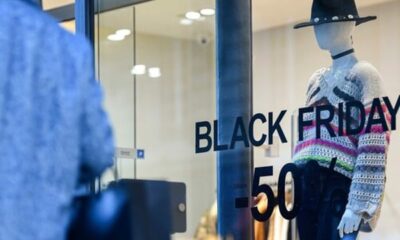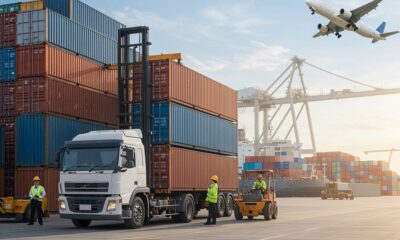Fashion
Is anybody fighting back in this trade war?
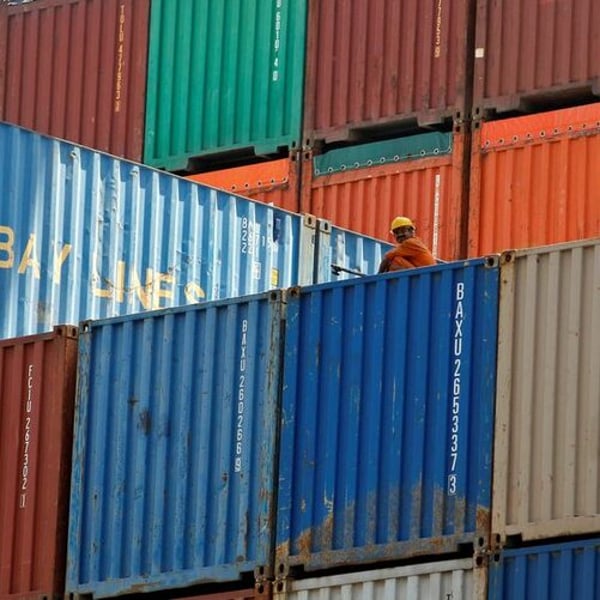
By
Bloomberg
Published
August 15, 2025
William Clayton, a businessman who served successive US presidents and became one of the chief architects of the Marshall Plan, was no fan of tariffs. He rated the barriers erected during the Great Depression as one of the great crimes of the century. It’s hard to imagine that Clayton, who believed that free trade was as important to prosperity as American aid and security guarantees, would remotely approve of Donald Trump‘s efforts to reshape commerce.
This White House-engineered upheaval, which pushed tariffs to levels unseen since the Smoot-Hawley law of 1930, will be costly — even if the full price isn’t immediately apparent. The global economy hasn’t suffered some of the direst consequences that were predicted in April. Demand for US assets has held up, despite the superficial allure of the “sell America” narrative. The International Monetary Fund doubts growth will suddenly crater, and inflation hasn’t taken off. Has a bullet been dodged or is shock delaying the pain?
It’s notable that countries aren’t exactly lining up to fire back. With the exception of China, which has escalated and retreated to match the White House rhythms, there’s been little by way of reprisals. “It’s not a war when only one side fights,” JPMorgan Chase & Co. economists said in a recent note. “The primary drag from the trade war will come from US tariff hikes, but we also looked for broad retaliation by US trading partners.” The counterattack “has not materialised; in fact, barriers to US exports have been lowered,” they wrote.
By no means does the firm anticipate zero harm. Business confidence is down but not collapsing. Capital spending will be constrained. And while chances of recession are still high, a better outcome remains very plausible.
This sort of guarded optimism — or qualified pessimism — is a break from the dark warnings. Christine Lagarde, head of the European Central Bank, told leaders to prepare for a worst-case scenario in which an antagonistic US drags the world into destructive economic conflict. The prime minister of Singapore, a city-state that thrived during the heyday of free trade, couldn’t hide his dismay: Tariffs aren’t the actions of friends, Lawrence Wong noted. His Canadian counterpart, Mark Carney, declared that relations with the US would be changed forever. Chinese President Xi Jinping has studiously matched American moves but also toned down his rhetoric and actions when appropriate. Washington and Beijing this week extended a pause on higher tariffs for 90 days, the latest in a series of suspensions.
India, which has been the subject of some bullish projections as China’s economy has slowed, is one of the few economies of significance that hasn’t cut a deal with Trump. But Prime Minister Narendra Modi also hasn’t gone measure for measure or shown a desire to get even with American businesses. Yes, there has been indignity and hurt feelings. The governor of the Reserve Bank of India dismissed Trump’s claim that commerce was dead there. He touted India’s contribution to global growth — about 18% compared to around 11% for the US — and insisted the local economy was doing well. This is in the ballpark, based on IMF projections. It also misses the point that in pure size, America dwarfs India.
Brazil, a comer that struggles to make good on its potential, is also refusing to bend. President Luiz Inacio Lula da Silva loathes dependence on the US and wants to be treated as an equal. But Trump doesn’t like a court case against Lula’s predecessor for allegedly plotting a coup. Brazil is trying to develop an alternative to the dollar and places great store in commercial ties to the BRICS group of emerging economies. Many of those nations, and aspiring members of the bloc, have cut deals with Trump, or are likely to do so. Brazil will come to some arrangement.
So has Trump got away with it? His aides reckoned that access to the American market is too lucrative to pass up, and they may have been right. It would also be naive to conclude there won’t be any cost. The global economy has slowed but hasn’t crashed, foreigners still purchase US Treasuries and it’s a safe bet that the greenback will be at the centre of the financial system for years.
But the nations humiliated won’t forget this experience. Asia’s economies will only get bigger and the siren call of greater integration with China will get louder. Trump’s efforts to destroy the existing order may yet prove an own goal. Just not this year.
Clayton, who became the top economic official at the State Department, believed that robust trade among the shattered nations of Western Europe was as important as physical rebuilding. The economic dislocation wrought by the conflagration had been underestimated; capitalism could revive the continent and prevent the political implosion of key countries. According to Benn Steil’s book The Marshall Plan: Dawn of the Cold War, Clayton insisted that the US “must run this show.”
Trump’s team brag about reconfiguring the system that grew from the ideals of the post-war era. The hubris may ultimately prove misplaced.
Fashion
UK budget mildly deflationary; debt to climb past 106%: Fitch
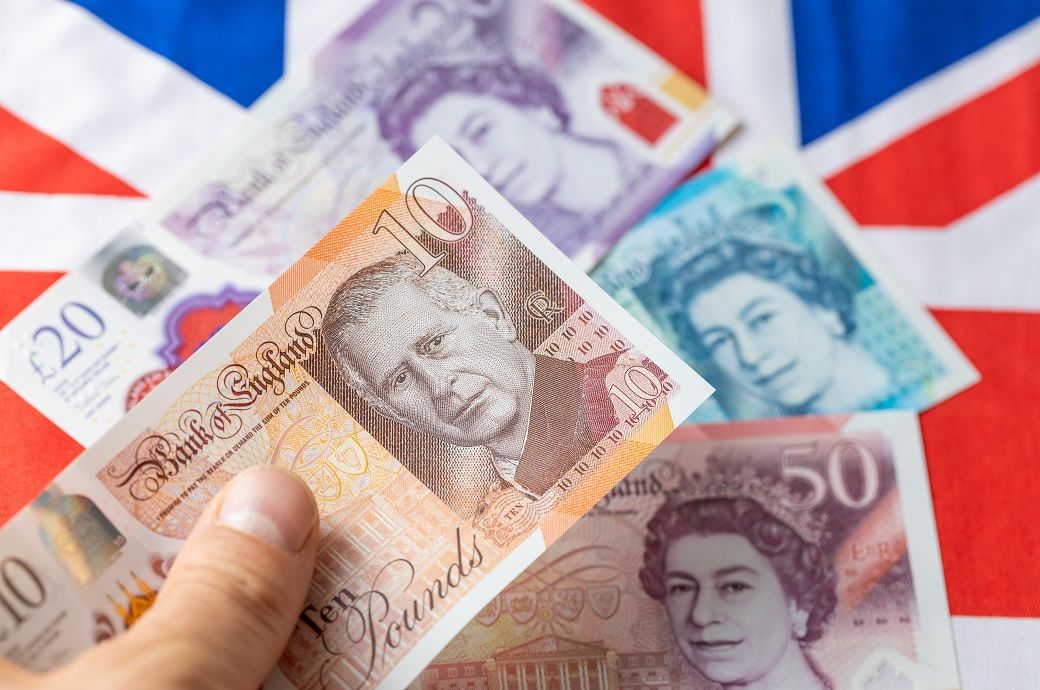
The rating agency said the government’s latest fiscal package is broadly in line with projections made when it affirmed the UK at ‘AA-’/Stable in August but said that the path to consolidation is becoming more challenging.
Fitch Ratings has deemed the budget marginally deflationary, sees debt rising above 106 per cent of GDP by 2027.
The agency said the UK budget broadly aligns with its August deficit projections but signals of rising implementation risks due to back-loaded tax measures and tight spending plans.
New taxes total £26 billion (~$34.37 billion) by FY29, while social spending rises further.
Fitch said the budget’s new tax measures represent £26 billion (~$34.37 billion), or 0.7 per cent of GDP, by fiscal 2029 (FY29), with threshold freezes contributing £8 billion (~$10.57 billion). New Office for Budget Responsibility (OBR) data show general government net borrowing projections 0.2 percentage points (pp) higher on average in 2026–2028 than in March, before falling 0.2 points in 2029, Fitch Ratings said in a release.
Fiscal data since summer remain broadly in line with Fitch’s forecast for the general government deficit to narrow by 0.6 pp in 2025 to 5.3 per cent of GDP and then to 4.4 per cent in 2027, around 0.7 points slower than the government’s new targets.
The agency highlighted material uncertainty around implementation, particularly given the challenging expenditure consolidation outlined in June’s Spending Review, which the budget largely preserves. Real-terms public-sector current spending growth has been tightened further in FY29 to zero, averaging 1.2 per cent in FY26–FY28 compared with 3.4 per cent in FY24–FY25.
Fitch noted that many tax measures are highly back-loaded, coming into effect closer to mid-2029, the latest possible timing of the next general election. A large portion of the tax plan also consists of numerous smaller measures, making the overall impact less transparent than the broader income tax rise the government signalled before the budget. Options to raise further revenue are politically constrained by 2024 election pledges not to increase personal income tax, VAT or National Insurance.
Still, Fitch said Chancellor Rachel Reeves is demonstrating firmer commitment to the fiscal rule than recent predecessors. Last year’s decision to shorten the rolling forecast horizon from five to three years from 2026 has reduced the scope to delay real fiscal adjustment. Aligning fiscal plans more closely with three-year spending reviews also makes it harder to rely on unrealistic spending cuts to fill fiscal gaps.
Budget headroom has increased from £12 billion to £22 billion, around 0.6 per cent of GDP, but Fitch said this remains limited and constrains efforts to improve policy predictability.
Revenue projections have been reshaped by a £16 billion downgrade in expected tax receipts due to lower OBR productivity assumptions, reducing average GDP growth in 2026–2029 by 0.3 pp to 1.5 per cent. Upward revisions to inflation and wage growth more than offset this decline. The OBR’s updated medium-term GDP growth outlook is now closer to Fitch’s trend estimate of 1.4 per cent, of which total factor productivity contributes only 0.3 points.
Although sustained high nominal gilt yields represent a significant fiscal risk, the UK’s long average debt maturity of 13.7 years helps contain projected debt-interest requirements, which Fitch expects to rise modestly to 7.4 per cent of revenue in 2027 from 7 per cent in 2024.
Fitch projects modest GDP outperformance in the near term compared with its August forecast of 1.2 per cent for 2025, although a weakening labour market poses a small downside risk to its 1.2 per cent projection for 2026. The agency judges the budget as marginally deflationary and expects inflation to fall to 2.4 per cent by end-2026.
Fibre2Fashion News Desk (HU)
Fashion
New Balance launches three new stores in Bengaluru, India

Published
December 1, 2025
Global athletic brand New Balance has expanded its brick-and-mortar footprint in the Bengaluru metro area and opened its doors at three new locations: Indiranagar, HSR, and Forum South Bengaluru.
“We are excited to deepen our presence in Bengaluru- with our stores at Brigade Road, Indiranagar, Forum Mall, and HSR, anchoring us in a city that embodies innovation, culture, and an unwavering passion for fitness,” said New Balance India’s country manager Radeshwer Davar in a press release. “This weekend’s in-store experience and community run allowed us to bring New Balance’s philosophy to life while reinforcing our commitment to building inclusive fitness communities and we want to thank the people of Bengaluru who turned up in great spirit.”
Highlighting its long-term commitment to the Indian market, the new outlets are designed to offer an immersive retail environment and mix craftsmanship with technology. New Balance held an exclusive in-store event at its Indiranagar store, featuring an interactive brand showcase of both footwear and apparel. The New Balance Run Club also put on a community run which saw participation from over 200 individuals.
“Over the past year, we’ve more than doubled our retail footprint in India, and these three new stores are a strong testament to that momentum,” said Davar. “For us, it’s not just about expanding retail locations- it’s about creating experiential centres that bring innovation, performance, and style together under one roof.”
Headquartered in Boston, US, New Balance has been independent since 1906 and employs 10,000 associates worldwide. The business reported a global sales total of 7.8 billion dollars in 2024 and counts five athletic footwear factories in New England, US and one in Flimby, UK.
Copyright © 2025 FashionNetwork.com All rights reserved.
Fashion
U.S. Black Friday online sales hit record $11.8 billion, Adobe reports
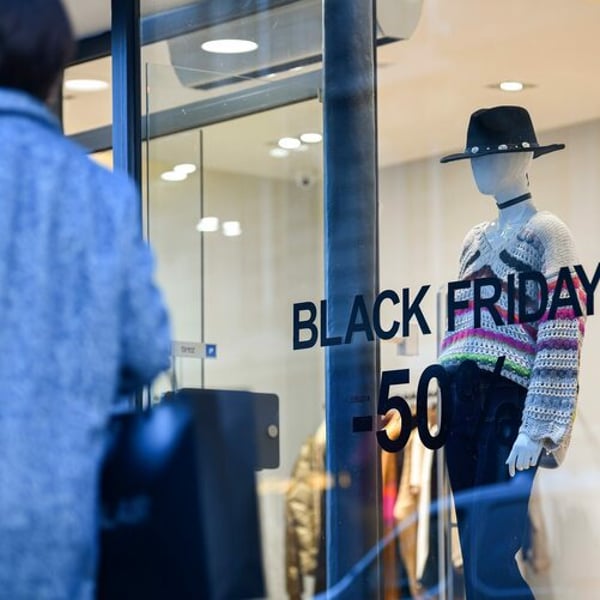
By
Reuters
Published
December 1, 2025
American shoppers spent a record $11.8 billion online on Black Friday, up 9.1% from last year, final data from Adobe Analytics showed.
Adobe Analytics, which tracks over 1 trillion U.S. retail site visits, expects shoppers to spend $5.5 billion on Saturday and $5.9 billion on Sunday, up 3.8% and 5.4% from a year earlier respectively.
Separately, software firm Salesforce reported that American consumers had spent $18 billion on Black Friday purchases, up 3% from a year ago, with luxury apparel and accessories among the most popular categories.
Although U.S. consumers spent more this Black Friday compared to last year, price increases hampered online demand, according to Salesforce, with shoppers purchasing fewer items at checkout compared to last year.
At physical stores, the bargain-chasing was relatively subdued on post-Thanksgiving morning, with some shoppers saying they feared overspending amid persistent inflation, trade policy-driven uncertainty, and a soft labor market.
Cyber Monday, traditionally a big day for online deals, is expected to be the season’s biggest online shopping day again, Adobe projects, driving $14.2 billion in spending, up 6.3% from last year.
© Thomson Reuters 2025 All rights reserved.
-

 Sports1 week ago
Sports1 week agoWATCH: Ronaldo scores spectacular bicycle kick
-

 Entertainment1 week ago
Entertainment1 week agoWelcome to Derry’ episode 5 delivers shocking twist
-

 Politics1 week ago
Politics1 week agoWashington and Kyiv Stress Any Peace Deal Must Fully Respect Ukraine’s Sovereignty
-

 Business1 week ago
Business1 week agoKey economic data and trends that will shape Rachel Reeves’ Budget
-

 Politics1 week ago
Politics1 week ago53,000 Sikhs vote in Ottawa Khalistan Referendum amid Carney-Modi trade talks scrutiny
-

 Tech6 days ago
Tech6 days agoWake Up—the Best Black Friday Mattress Sales Are Here
-

 Fashion1 week ago
Fashion1 week agoCanada’s Lululemon unveils team Canada kit for Milano Cortina 2026
-

 Tech1 day ago
Tech1 day agoGet Your Steps In From Your Home Office With This Walking Pad—On Sale This Week




